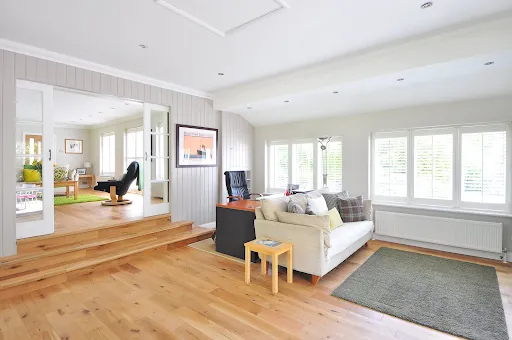In recent years, the urgency of implementing sustainable practices into our everyday life has grown significantly. Among the multitude of aspects that can be tailored towards a greener lifestyle, the construction industry has been showing a notable shift towards eco-friendly building materials. The incorporation of these materials not only promotes sustainability, but also contributes to an enhanced living environment. From insulation to roofing, every element of construction can play a part in making a building more energy-efficient and environmentally friendly.
One component that holds substantial significance in this context is windows. According to the U.S. Department of Energy, heat gain and heat loss through windows are responsible for approximately 25-30% of residential heating and cooling energy use. Therefore, an upgrade to more energy-efficient windows can have a dramatic effect on your home’s energy use and environmental footprint.
This article examines the benefits of eco-friendly windows, and considerations for choosing the right window for you. From those designed with high energy efficiency to windows made from sustainable or recycled materials, eco-friendly windows not only lessen your impact on the environment, but can also provide cost savings in the long run.
Table of Contents
Understanding the Importance of Eco-Friendly Windows
Eco-friendly windows contribute to substantial reductions in energy use by minimizing heat loss in winters and reducing heat gain in summers, making replacement windows in Greensboro an excellent choice for your home. This improved insulation leads to a more constant indoor temperature, less reliance on heating and cooling systems, and, consequently, lower energy consumption. As a result, homeowners can enjoy significant cost savings on their utility bills over time.
Beyond the immediate financial savings, eco-friendly windows have broader benefits for the environment. By reducing the energy demands of a household, they play a part in decreasing the associated carbon emissions, thus reducing the home’s carbon footprint. Furthermore, windows made from recycled or sustainable materials help conserve natural resources, contributing to broader environmental preservation efforts.
Apart from energy and environmental benefits, eco-friendly windows contribute to a more comfortable and healthier living environment. Enhanced insulation properties not only regulate temperature but also reduce noise pollution, leading to quieter, more peaceful indoor spaces. Thus, eco-friendly windows not only save energy and protect the environment, but also promote a high-quality living experience.
Considerations When Choosing Eco-Friendly Windows
Climate
When choosing eco-friendly windows, take heed of your geographic location and local climate. Understanding the U-Values and Solar Heat Gain Coefficient (SHGC) of windows can help you select windows that are well-suited to your climate, reducing unnecessary heat gain or loss. Selecting the right window type for your climate not only enhances your home’s energy efficiency but also improves the comfort level within your living spaces.
Material and Sustainability
The choice of material for your windows is another key consideration, both in terms of sustainability and durability. Different materials have varying lifespans and durability, and their environmental impacts also vary. For example, while vinyl windows might be long-lasting and low-maintenance, windows made from sustainably-sourced wood may have a smaller environmental footprint.
Cost and Installation
While the initial cost of eco-friendly windows might be higher than traditional options, the long-term energy savings often make them a more cost-effective choice in the long run. The quality of installation determines whether your windows function at their maximum potential. Therefore, factor in both the cost implications and the importance of professional installation when choosing eco-friendly windows.
The market for eco-friendly windows is growing, with several top brands leading the charge in innovation and quality. These manufacturers range from established names like Andersen, which offers a series of energy-efficient windows certified by Energy Star, to newer players like Alpen High Performance Products, known for their superior insulation technology. Each brand provides a unique set of offerings, with differences in design, materials used, energy-saving technology, and certifications.To illustrate, Marvin’s windows come with multiple high-performance glazing options, while Pella is renowned for its commitment to environmental stewardship. Additionally, customer reviews offer real-world insights into the performance and reliability of these windows. By comparing these factors, consumers can make an informed decision to choose the best eco-friendly window brand that aligns with their specific needs and priorities.
Eco-friendly windows offer a multitude of benefits including energy efficiency, environmental impact reduction, and enhanced comfort, making them an excellent choice for modern homes. However, it’s important to consider factors like climate, material, cost, and professional installation to ensure you choose the most suitable windows for your specific needs. By investing in eco-friendly window options, not only are you contributing to a more sustainable future, but you are also likely to reap financial benefits and a better living environment in the long run.







